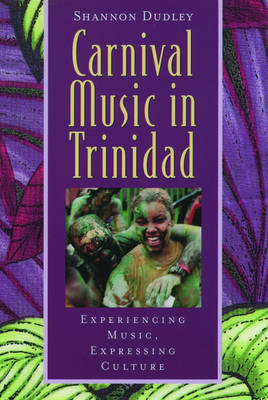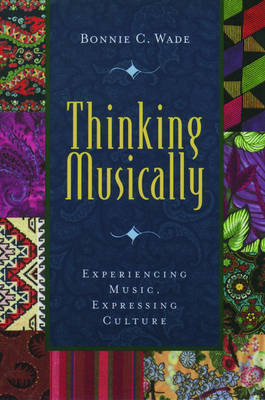Global Music
1 primary work • 4 total works
Vol. 2
Designed for undergraduates with little or no background in world music, Music in Trinidad is one of several volumes that can be used along with Thinking Musically, the main book in the Global Music Series, in any introductory world music or ethnomusicology course.
Music in Trinidad explores how the history and culture of Trinidad is related to the expression and interpretation of Carnival music, the musical tradition most representative of Trinidadian culture. It looks at the genres of calypso, steelband, and soca and describes both their musical structure and their political and symbolic meanings in Trinidad's society. The book also examines how the instruments, sounds, and lyrics of Carnival music provide a sense of national and ethnic
identity. Music in Trinidad includes many vivid accounts and illustrations of Carnival performances and is packaged with a 70-minute CD that includes examples of the various genres of Carnival music.
Music in Trinidad explores how the history and culture of Trinidad is related to the expression and interpretation of Carnival music, the musical tradition most representative of Trinidadian culture. It looks at the genres of calypso, steelband, and soca and describes both their musical structure and their political and symbolic meanings in Trinidad's society. The book also examines how the instruments, sounds, and lyrics of Carnival music provide a sense of national and ethnic
identity. Music in Trinidad includes many vivid accounts and illustrations of Carnival performances and is packaged with a 70-minute CD that includes examples of the various genres of Carnival music.
v. 2
This title is a volume in the "Global Music Series", edited by Bonnie Wade and Patricia Campbell. Appropriate for use in undergraduate, introductory courses on world music or ethnomusicology, it is an overview of the musical traditions of Trinidad, particularly Carnival. In describing the musical convention, modes of performance, and social dynamics of Trinidadian music, this texts places the music of Carnival within the context of Trinidad's rich history and culture.
v.1
"Thinking Musically", the first volume in a textbook series on global music, is designed as the core text for undergraduate, introductory courses on world music. Supported by case studies from a variety of cultures, the text defines musical terms and concepts and discusses how musical organization and structure differ across cultures. It also discusses how themes and issues in world music are influenced by elements of their cultural climate such as politics, economics, race and gender. A CD accompanies the text with selections from a wide variety of musical cultures and activities designed to build critical listening skills.
Teaching Music Globally guides readers in using Thinking Musically and its accompanying case studies. Essential for anyone who wishes to teach beginning students of any age about music from around the world, it describes many instructional techniques and offers a wealth of learning activities.



